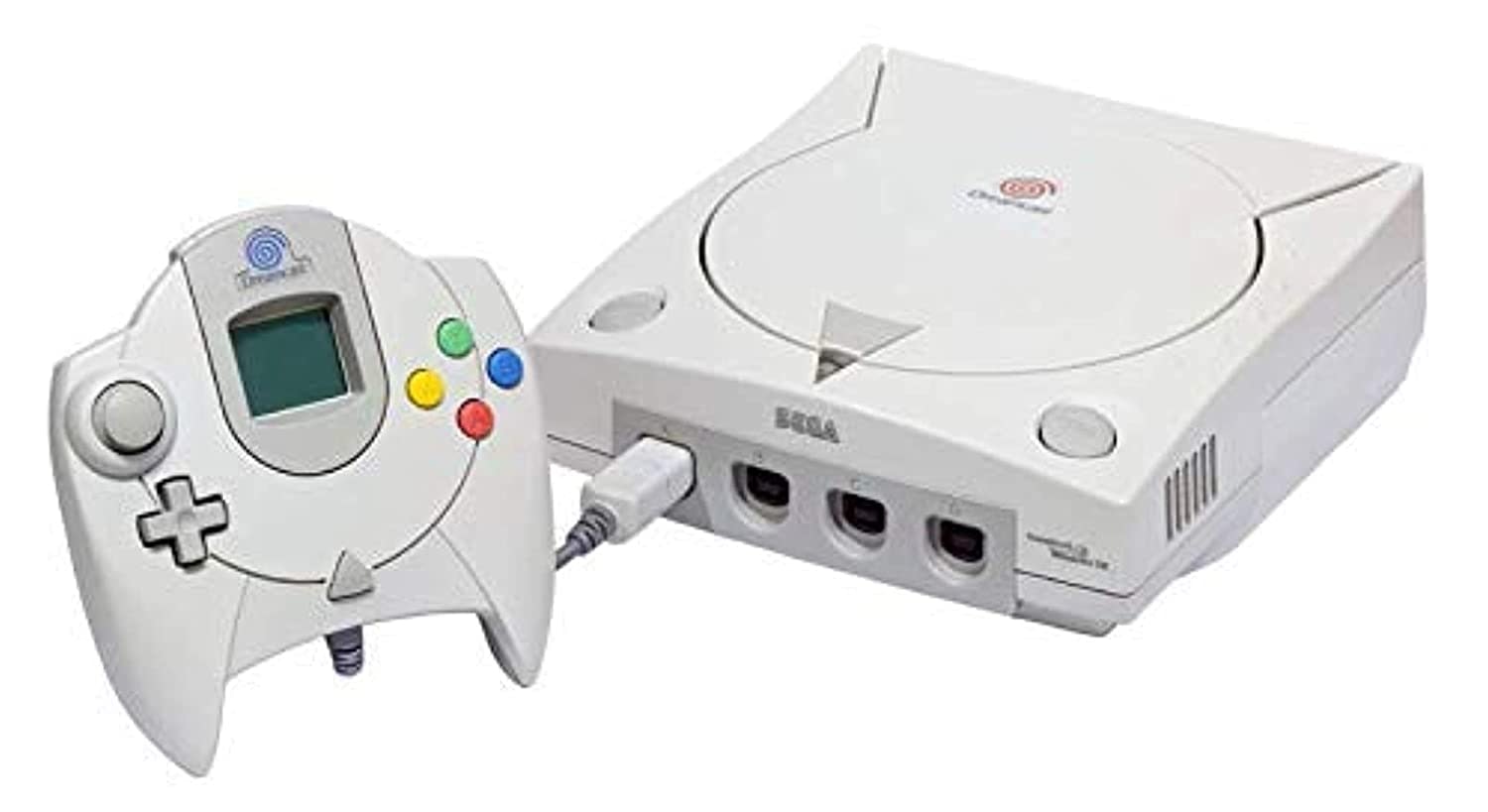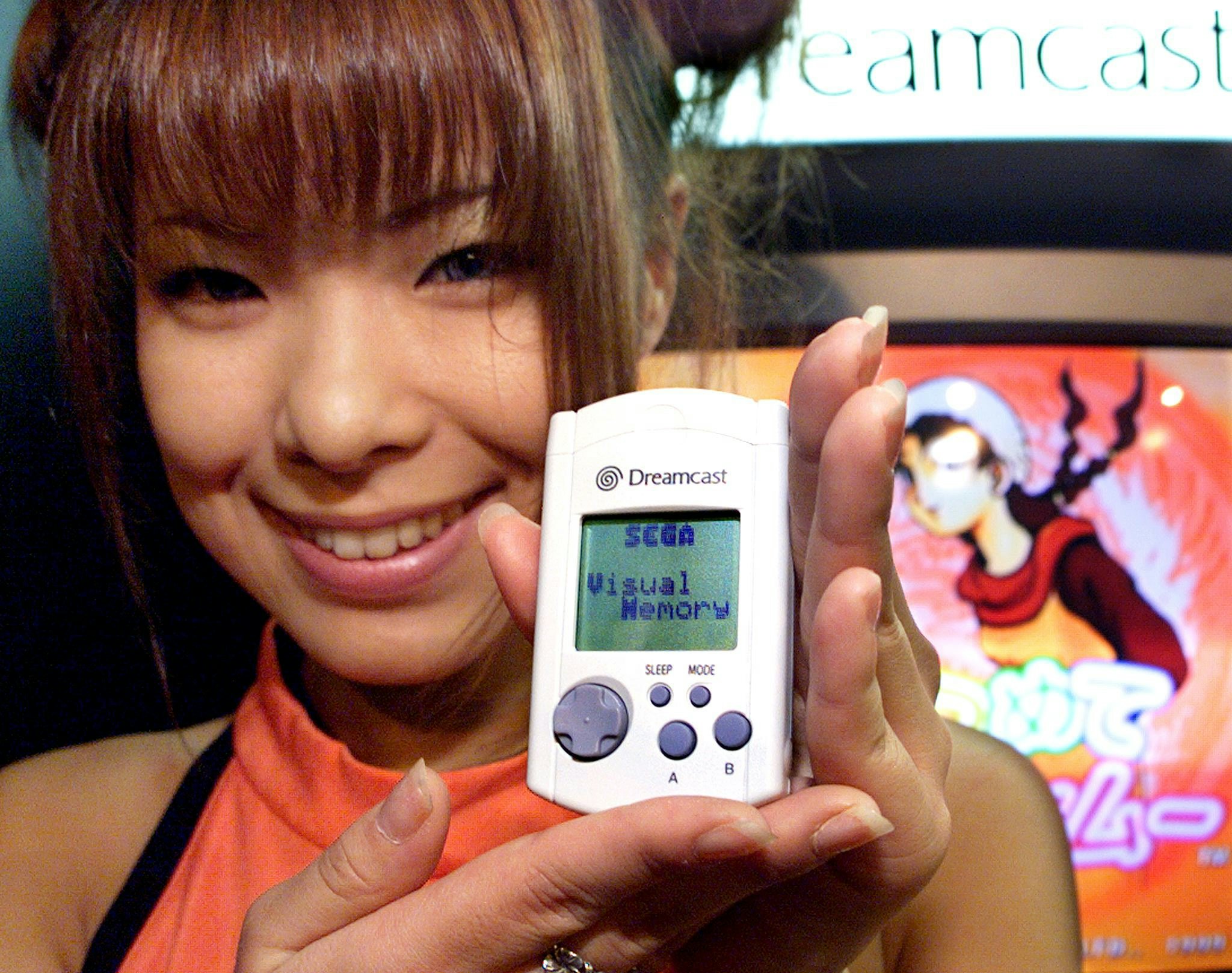
When I was in middle school, I had one friend who always had the newest top-of-the-line technology.
On the playground, he’d break out a Palm Pilot and wow the school with his Snake-playing prowess. I distinctly recall visiting his house for his birthday, going into his basement, and seeing a massive television with a 3D Sonic the Hedgehog outrunning a truck on screen. There was an odd, gray plastic console plugged into the front, with an even odder controller in my friend’s hands. I’ll never forget him unplugging a Tamagotchi-like memory card out of the bottom of the controller — it broke my small brain.
The Sega Dreamcast, which launched in North America in September 1999, left a better impression on me than most. It performed so far below expectations, it forced Sega out of the console business for good. Though it never managed to catch up to the hype surrounding the PlayStation 2, Sega’s last console was the first to feature any sort of online functionality, which would later become an industry standard.
Dreams vs. Reality

Sega was a major titan in the console market, an actual rival to the dominant Nintendo. The Genesis, released in North America in 1989 was a smashing success. For a brief time in the early 1990s, Sega controlled 65 percent of the North American 16-bit console market. The Genesis sold around 31 million units and introduced the world to the company’s decade-running mascot Sonic the Hedgehog. But the Sega’s 1995 successor console, the Saturn, failed to reach the same lofty highs as its predecessor, selling only 9.25 million units over its lifespan.
So on their next console, Sega had to release a blockbuster machine to save its reputation. Codenamed Katana, Sega focused its resources on creating a technologically advanced console that could compete with the Sony PlayStation and Nintendo 64.
The Dreamcast was the first 128-bit home console, equipped with a 56k modem that could connect to dial-up internet. It used GD-ROMs, a precursor to DVDs, which could store over 1 GB of data. But even before it could take its first steps, it was met with a few serious blunders. Third-party developers struggled to make content with the new technology, and EA outright refused to make games for Dreamcast unless given sports title exclusivity.
Even worse, Sony announced that it's PlayStation 2 would release in March of 2000, just months after the Dreamcast’s launch in September 1999. The PS2, which used DVD technology and was much easier for developers to work with, went on to become the best-selling game console of all time, with more than 158 million units sold as of 2022.
Cabinet of Curiosities
Though the Dreamcast lacked the power of the PS2, it did have a library of games unlike anything else out there. Sonic Adventure was the first game to bring the blue hedgehog into the world of the third dimension and is still an absolutely amazing platformer. Running over roads and through loops at the speed of sound never gets boring, especially when a whale is chasing you. To this date, Sega has yet to release a Sonic game outside of 2D that is anywhere near as fun or groundbreaking as Sonic Adventure or its sequel.

Sega published weird games that took risks during the Dreamcast era. Shenmue helped inspire single-player action games like the Grand Theft Auto and Yakuza series. Fighting games like Soul Calibur, Power Stone, Marvel vs. Capcom 2, and Dead or Alive 2 still have devoted fans running tournaments. Space Channel 5 put you in control of a television host who needed to dance to defeat monsters. Rez was an audio-visual mind explosion, which came with a vibrating block that some naughty players used for, um, “personal gratification.” And then there’s Seaman, where you raise a human-faced fish by talking to it through a microphone.
But these oddball gems weren’t enough to save the Dreamcast. In March 2001, less than two years after it launched, Sega announced plans to discontinue the console.

“When you look back to prior and then certainly post that, I don’t want to say everything was incremental, but it was an evolving of the previous experience,” then-head of Sega of America Peter Moore told The Ringer in 2019. “I think the Dreamcast was revolutionary.”
Moore’s words still ring true, 23 years later — the legacy of the short-lived Dreamcast is hard to overstate. It brought online play to the masses years before teens were screaming at each other on Halo when Xbox Live launched in 2002. It had a library of classics that are still considered some of the best games ever made. It’s a reminder that sometimes the best platforms don’t get the recognition they deserve — until they’re already gone.







